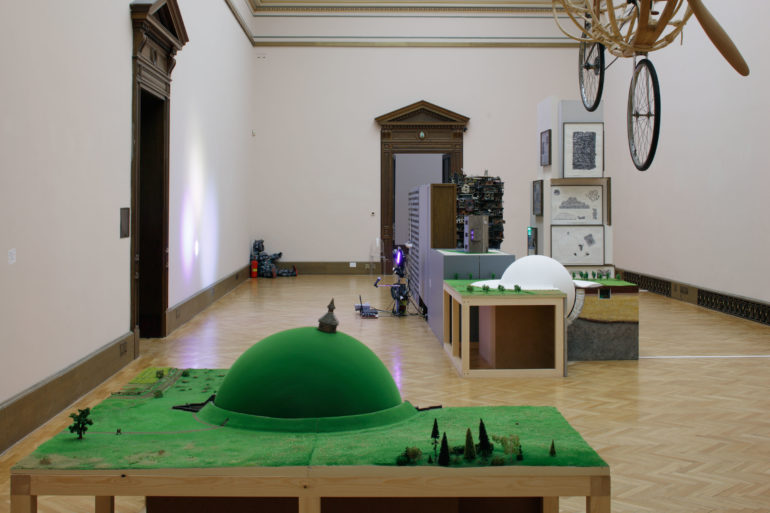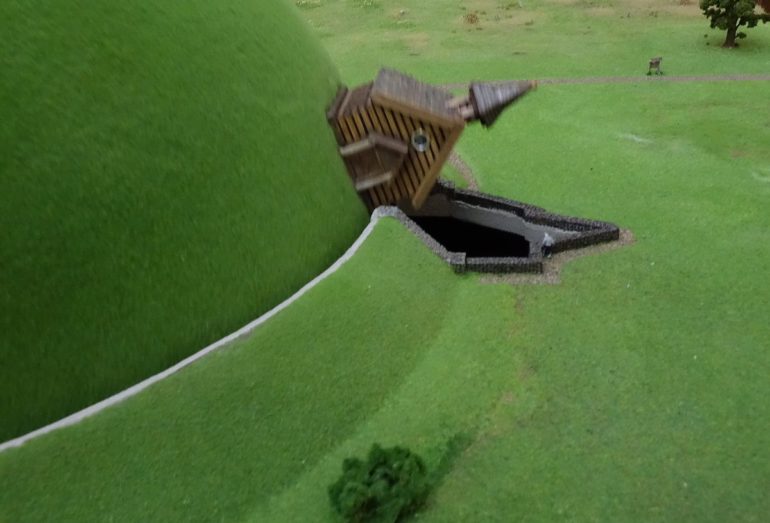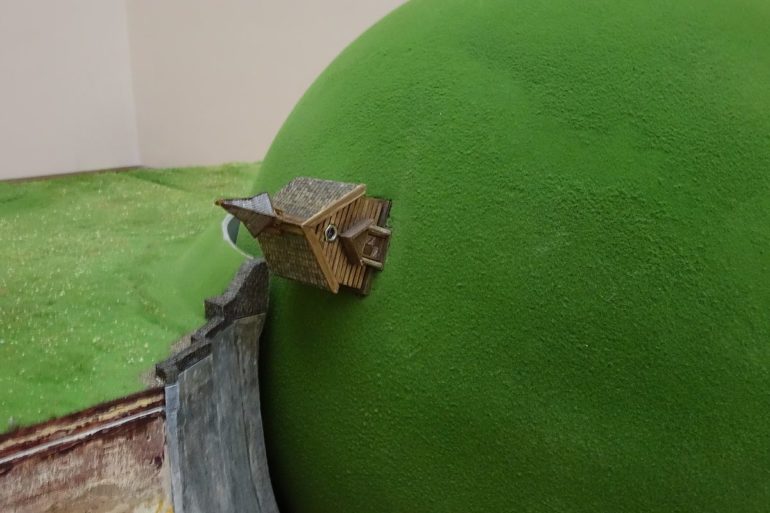Holy Hill, 2015, mixed media, 220 × 220 × 70 cm

The project aims to create a monumental building on the borderline of architecture and Land Art, serving to deepen the spiritual experiences of believers. Financing of the project should not be more difficult than building a larger church. Location — flat landscape, e.g., the Roudnice region.
I propose to construct a sphere with the diameter of 50 to 100 meters, and to insert this monument into an adequately sized hemispherical pit excavated for the purpose of this project in such a way so that a half of the sphere is slightly submerged below the surface of the earth. Under the surface a shaft goes through the sphere driven by a powerful engine, on which the building would spin. The shaft should be propelled by a powerful engine. On the sphere there should be a firmly anchored wooden chapel specially built for this purpose, in order to withstand extreme stress caused by the rotation of the sphere. It should represent a real protection of the believers. Construction, material of the sphere and other technical specifications of its realization will depend on the requirements arising from the project completed by an architect and a project engineer. The surface of the sphere should be similar to the surface of soccer fields. It should be a grassy, self-irrigating carpet grown in several layers of mesh saturated with soil and fertilizer.
Church service — The duty of the priest serving such a radical religious service is to ensure the safety of the believers. To this end, he will perform training like in an airplane. He will check all safety systems, including buckling of special clothing, belts and helmets, and acquaint his fellows with the potential risks. Then the service can start.
The priest will determine the length of worship and set up the time device of the remote control putting the engine into operation. The length of worship must correspond to one rotation of the sphere around its axis. After the commencement of both the movement and preaching, the chapel slowly begins to tilt to one side. Discomfort and drama increases. The believers find that they are falling into the abyss milled for this purpose along an imaginary equator of the sphere. This abyss imitates the elongated shape of the nave. The church seems to be forever falling. The unbearable feeling increases. In the background there is a sound of creaking wood and fatal organ tones, complemented by wild jingle of the bell from the belfry reacting to the intermittent vibration of the whole building. The priest keeps preaching with urgency over all this.
After some time, the believers understand that they are upside down, i.e., in an extreme situation. The trauma climaxes. In this challenging position, accompanied by a slow movement of the building through darkness with rocks faintly looming behind the windows, the believers arrive at the state of hopelessness. However, passing through imaginary hell is followed by an upward motion.
The believers are gradually getting into a more natural position. In the distance they begin to see faint light at the end of the tunnel. The intensity of the rays is gradually rising. The priest uses this natural optimism for verbal mediation of feelings of hope. The position of his audience is more and more comfortable. The tension is released and when the chapel finally reaches the surface, the light breaks to experiencing feelings of hope and a catharsis and joy at overcoming the state of suffering. The rest of the journey is a celebration of the victory of life over death. The believers may even feel profound states of rebirth. They leave the chapel spiritually cleansed.







